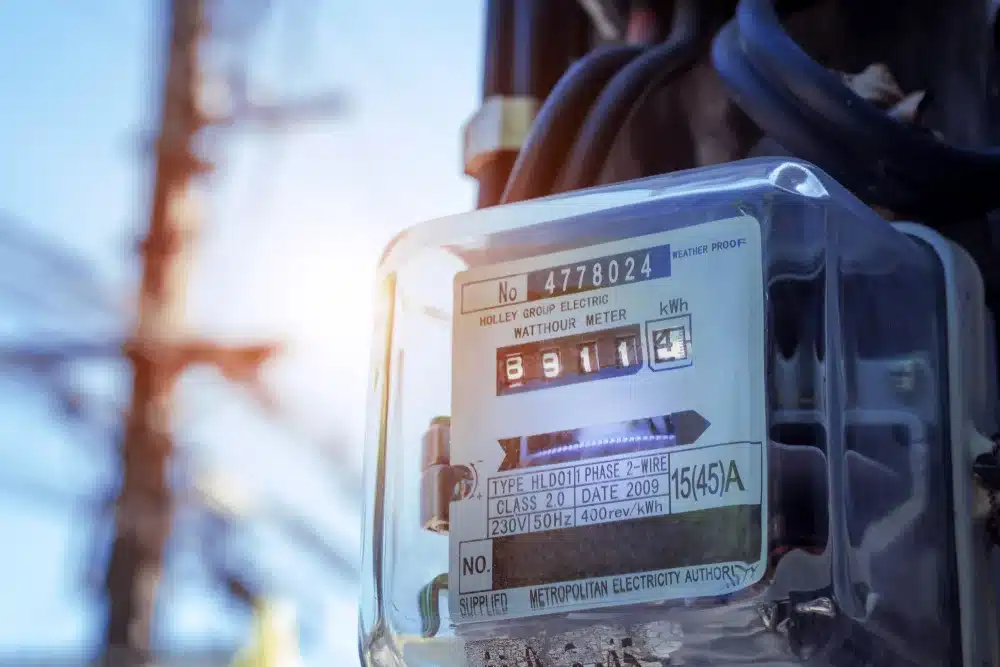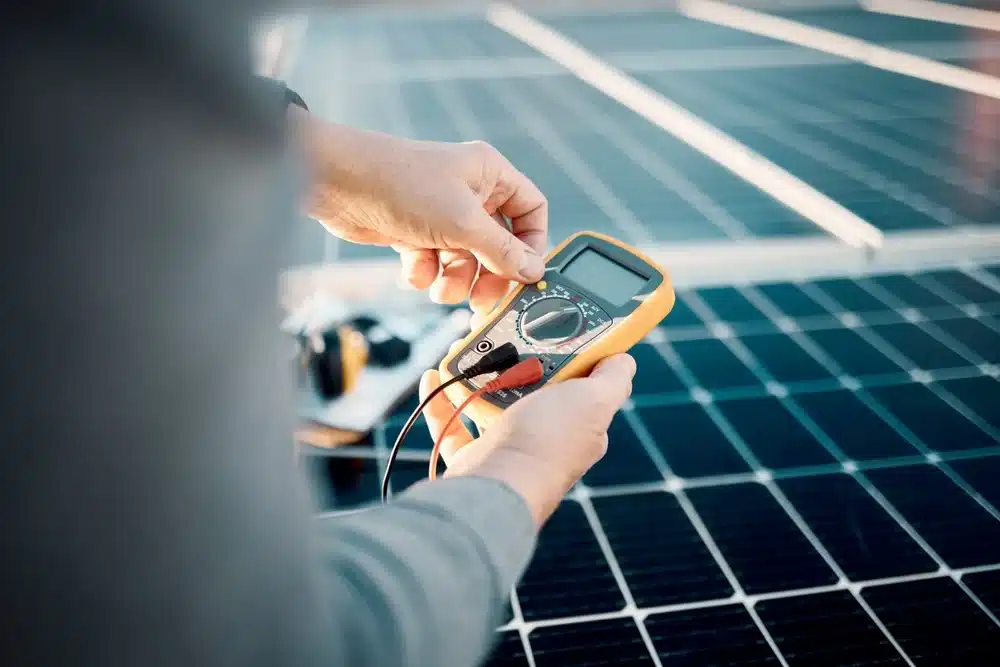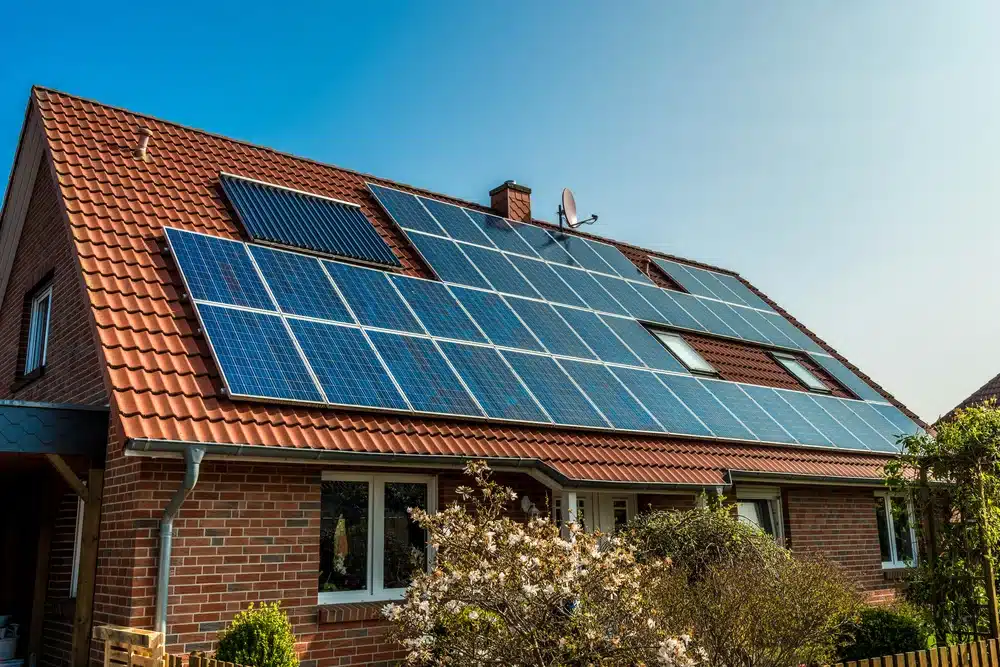The rise in global average temperatures and increase in greenhouse gas emissions have called for energy-efficient systems around the world. In Australia, energy efficiency in homes has taken a front seat, as the struggle to reduce carbon footprint and combat climate change has become more important than ever. An energy-efficient home not only contributes to a healthier planet but also offers massive benefits to homeowners, including reduced energy bills, improved comfort, and increased property value.
In 2022, the National Construction Code (NCC) introduced changes that have increased the minimum energy efficiency building standards from 6 to 7 stars (out of 10) under the Nationwide House Energy Rating Scheme (NatHERS). The NCC also introduced an annual budget for assessing the energy use in households, including major fixed appliances, solar panels, and solar batteries. This move aims to shift gears towards creating energy-efficient and comfortable homes that cost less to run.
But what is the NatHERS rating system? How can you increase the NatHERS rating of your home? And, most importantly, how can solar panels, PVs, and batteries help you save more while boosting your ratings? Read along to find out.
What is NatHERS?

NatHERS, or the Nationwide House Energy Rating Scheme, is Australia’s standard for measuring the thermal performance of homes. It uses a 10-star rating system to assess how well a dwelling can maintain a comfortable internal temperature despite the weather outside. Essentially, the more stars a house has, the less energy it needs to keep warm in winter and cool in summer.
Here’s a helpful guide:
- A 0-star rating means the home is very uncomfortable to live in: too hot in summers, too cold in winters. It offers no insulation from the outside temperatures. Imagine it’s 20 degrees outside, and it feels like a scorching 30 degrees inside!
- On the flip side, a 10-star rating means that your home stays comfy all year round, regardless of the weather, drastically cutting down on energy use and those pesky power bills.
Why Does a 7-star NatHERS Rating Matter for Homeowners?

Achieving a 7-star NatHERS rating is a smart move for the future because it offers numerous benefits for homeowners and the environment. Here’s why it matters:
Benefits for Homeowners and the Environment
- Energy Efficiency: A 7-star rating means your home is designed to use less energy for heating and cooling. This reduces your carbon footprint and helps in the fight against climate change.
- Sustainable Living: By building a more efficient home, you’re contributing to a greener future. Less energy consumption means fewer greenhouse gas emissions.
Cost Savings, Comfort, and Resale Value
- Cost Savings: With better insulation and energy-efficient design, you’ll spend less on energy bills. That’s more money in your pocket every month.
- Increased Comfort: A 7-star home maintains a comfortable temperature year-round with minimal need for heating and cooling. Say goodbye to those scorching summers and freezing winters inside your home.
- Enhanced Resale Value: Energy-efficient homes are in demand. A 7-star rating can boost your home’s resale value, making it a smarter investment for the future.
As 7-stars become the new minimum standard, reaching beyond this threshold will become easier and more cost-effective. This measure is anticipated to create net zero carbon or even true zero carbon homes in the coming years.
How to Improve NatHERS Star Rating for Your Home?

Since 2022, The National Construction Code (NCC) has mandated a minimum 7-star rating for all new homes in Australia to ensure they’re built with energy efficiency in mind. These stars are determined through thermal modelling using NatHERS-accredited software. This software takes into account:
- Construction type: Homes should be designed to suit the local weather, using shade and solar access appropriately for tropical, temperate, or cool climates. Simply changing the orientation of the house can make a big difference in energy performance.
- Materials: Materials should be selected to match the climate. Light-coloured roofs and walls are generally better, except in Alpine regions. Lightening roof and wall colours generally lead to better ratings, unless in an Alpine zone. Even adjusting window frame colours can make a difference.
- Glazing: The cost of double- and triple-glazing has reduced considerably, making it more affordable and effective for homeowners. Using custom window options instead of default ones usually results in a higher rating. Window size, placement, and shading should be considered to suit the climate.
- Lighting: Homes with fewer holes in the ceiling receive higher ratings. Avoiding non-IC4-rated downlights, roof windows, and skylights when possible is recommended. Ceiling insulation should be uninterrupted by unnecessary light fixtures.
- Insulation: Home insulation can be improved by increasing the R-value of walls, floors, and ceilings. Insulation can be added to new areas like the slab edge, underneath the slab, the garage wall, and internal walls, especially in unconditioned zones like laundries and bathrooms. Care must be taken to avoid condensation issues.
It then uses climate data to calculate the total heating and cooling needs throughout the year, aiming to meet specific targets set by NatHERS.
Boosting your home’s NatHERS star rating is all about smart design, great insulation, and efficient windows. So, if you’re aiming for a high NatHERS rating, keep in mind the above points while working on your next home.
But why stop there? In the next section, we’ll explore how harnessing the power of the sun with solar energy can supercharge your rating and save you money.
How Solar Energy Helps Homeowners Achieve a 7-Star NatHERS Rating

Australia has been increasingly shifting towards solar to meet its energy requirements. In 2023, rooftop solar panels contributed to 11.2% of the total electricity generated in the country. This statistic — which has increased by 1.9% since 2022 — is evidence of how solar power revolutionises the way we harness energy for our residential needs.
Here’s how incorporating solar energy solutions can help homeowners achieve a 7-Star NatHERS rating:
Enhancing Energy Efficiency
- Reducing Energy Dependency: By integrating solar energy systems, such as photovoltaic (PV) panels, solar hot water systems, and solar batteries, homeowners can dramatically decrease their reliance on grid electricity.
- Using Smart Appliances: Energy-efficient appliances can seamlessly integrate with solar energy systems. For example, smart lighting systems adjust their brightness based on the amount of natural light available, reducing unnecessary energy use. Similarly, smart thermostats optimise heating and cooling by using more solar energy during peak production times, ensuring comfort while minimising energy wastage.
- Home Energy Management Systems (HEMS): HEMS provide real-time data on both energy production from solar panels and overall usage. By prioritising the use of solar-generated electricity, these systems reduce the home’s reliance on grid power, optimising energy efficiency and lowering utility bills.
Moving Towards Sustainability
- Reducing Carbon Footprint: Solar PVs, batteries, and water systems not only lower bills but also reduce the home’s carbon footprint, contributing positively to the overall energy efficiency rating. A 2024 Report by The Australian Photovoltaic Institute (APVI), for example, has indicated that rooftop solar panels can reduce greenhouse gas emissions by around 785 Megatonnes over the next two decades.
- Integrating with Smart Homes: Smart homes employ high-tech inverters that efficiently convert the direct current (DC) generated by solar panels into alternating current (AC) that can be used by household appliances. These inverters ensure that the energy conversion process is as efficient as possible, reducing energy loss and maximising the usable electricity produced by the solar panels.
Rebates and Financial Incentives
The initial cost of installing solar energy systems can be a concern for many homeowners. However, various rebates and financial incentives are available to make solar energy more accessible and affordable:
- Solar Panels (PV): Rebates and interest-free loans are available for installing solar PV systems. These incentives can significantly reduce the upfront cost, making it easier for homeowners to invest in solar technology. For instance, the 7 Star Homes Program offers eligible Victorian households rebates and the option of an interest-free loan for solar panels, hot water systems, and solar batteries.
- Solar Hot Water and Heat Pumps: Households that install both solar panels and solar hot water systems or energy-efficient heat pumps can save up to $1,473 each year in electricity costs. Rebates are also available for solar hot water systems, further reducing the installation costs.
- Savings on Electricity Bills: Households with solar panels can save an average of $1,073 each year by generating and using their own energy. This reduction in electricity costs is a significant benefit that supports achieving a higher NatHERS rating.
Financial Benefit of Solar Energy for Your 7-Star NatHERS Rating

Achieving a 7-Star NatHERS rating for your home isn’t just about being eco-friendly; it’s also a smart financial move. Let’s break down and compare how investing in solar energy, can save you money and give you a solid return on investment (ROI) compared to other energy-efficiency systems, such as double-glazing or insulation.
| Item | Solar Panels | Double-Glazing | Insulation |
| Initial Investment | $4,000 –$5,000 | $10,000 –$20,000 | $1,000–$5,000 |
| Annual Savings | $800–$1,600 | $300–$500 | $200–$400 |
| Return on Investment (%) | 8%–16% | 1.5%–5% | 4%–20% |
| Payback Period | 5–10 years | 20–40 years | 5–25 years |
These estimates are based on the average energy savings and costs associated with each type of home improvement in Australia.
Solar panels are like the smart investment that keeps on giving. They save you more money each year, give you a quicker return on your bucks, and start paying for themselves much sooner than double-glazing or insulation. Plus, they cut your electricity bill by generating power, which boosts your home’s energy rating big time. So, if you’re looking to go green, solar panels are the quickest and most effective way to make your home energy-efficient.
Conclusion
Solar energy is a game-changer for boosting your home’s NatHERS star rating. By installing solar panels, you can dramatically cut down on energy bills, with the added benefit of reducing your carbon footprint. Solar panels have a lower initial investment compared to other energy-efficiency upgrades like double glazing, and they pay for themselves much faster. With annual savings of $800 to $1,600, and a payback period of just 5 to 10 years, solar panels offer a quick and impressive return on investment.
If you’re thinking about new building plans or upgrades, Solar Run is here to help you every step of the way. Our range of solar panels, inverters, batteries, and hot water heat pumps are designed to ensure that you never have to retail electricity for your regular energy needs.
Contact Solar Run today to make your home greener, smarter, and more cost-effective!






 Text Us
Text Us